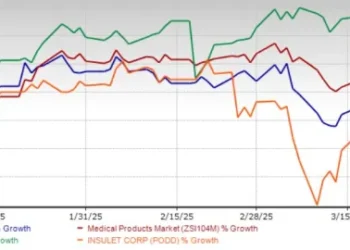As the U.S. retools its trade policies in an increasingly fractured global economy, tariffs—once seen as abstract economic levers—are becoming painfully tangible in the healthcare sector.
While much of the public conversation around tariffs focuses on electronics, agriculture, or automobiles, the less visible but critically important impact is in healthcare. From surgical gloves and syringes to complex medical devices and generic medications, tariffs have the power to raise costs, disrupt supply chains, and limit access to essential care.
A Global Supply Chain—Now Under Pressure
The healthcare industry is deeply reliant on global supply chains. China and India supply a significant portion of active pharmaceutical ingredients (APIs), basic medical equipment, and consumer health goods. Countries in Southeast Asia manufacture much of the low-cost protective gear and surgical tools used in U.S. hospitals. Even high-tech medical devices often include parts sourced from multiple countries.
When tariffs are imposed on these products—or on the raw materials used to make them—the ripple effects are immediate:
- Increased production costs
- Longer delivery timelines
- Lower availability of certain goods
- And ultimately, higher prices for hospitals, insurers, and patients
Medical Devices: The Silent Victims of Trade Policy
Many of the devices used daily in U.S. healthcare—like MRI scanners, stents, and insulin pumps—rely on globally sourced components. Even small tariffs on individual components can result in significant price increases for finished products.
According to the Advanced Medical Technology Association, a 25% tariff on certain Chinese-made device components could add hundreds of millions in additional costs annually—costs that are almost always passed down the chain.
This doesn’t just affect hospitals and providers. Patients may face higher co-pays, longer wait times for device-related procedures, or even treatment delays due to limited inventory.
Pharmaceutical Supply Chains Are Fragile—and Targeted
Roughly 80% of the active ingredients in U.S. pharmaceuticals are manufactured overseas. Tariffs on these materials or on related manufacturing equipment can severely disrupt availability, especially for generics and specialty medications.
During COVID-19, we saw how delicate the pharmaceutical supply chain can be. Tariffs add a new layer of stress, exacerbating shortages and raising the cost of critical drugs used in everything from chemotherapy to mental health treatment.
Healthcare Consumer Goods: Quiet Inflation
Tariffs don’t just hit hospitals—they affect everyday items consumers rely on, like:
- Over-the-counter medications
- Mobility aids
- CPAP machines
- Contact lenses and eye care supplies
These products often fly under the radar in trade policy debates, but for the elderly, chronically ill, or disabled, a modest price increase can have outsized impact on monthly budgets—and health outcomes.
Systemic Consequences: Inflation Without Compensation
The fundamental problem is that tariffs create cost inflation without corresponding increases in reimbursement. Medicare, Medicaid, and private insurers operate on pre-set payment schedules. When costs go up due to trade policy, providers often must absorb the difference—or pass it to patients through surprise bills and fees.
Worse, low-income communities and rural hospitals, already operating on razor-thin margins, are more likely to feel the brunt of these pressures, further deepening health inequities.
The Path Forward: Policy in Context
While some tariffs are aimed at protecting domestic manufacturing and national security, their unintended consequences in healthcare cannot be ignored. Policymakers must weigh these trade-offs more carefully:
- Exemptions for essential medical goods
- Strategic stockpiles for pharmaceuticals and PPE
- Domestic incentives to onshore manufacturing
- Streamlined approval for alternative suppliers in times of disruption
Trade policy isn’t made in a vacuum—and in healthcare, the stakes are often higher than in any other industry.
Final Thoughts
As the U.S. doubles down on tariffs to recalibrate its global trade position, the real cost may show up not at the ports, but in the pharmacy aisles, hospital procurement offices, and patients’ out-of-pocket expenses.
Healthcare is already stretched by inflation, workforce shortages, and growing demand. Adding tariff-driven volatility to the mix risks making care even more expensive—and less accessible—for millions of Americans.
The next time tariffs are proposed in the name of economic security, we must also ask: at what cost to public health?















